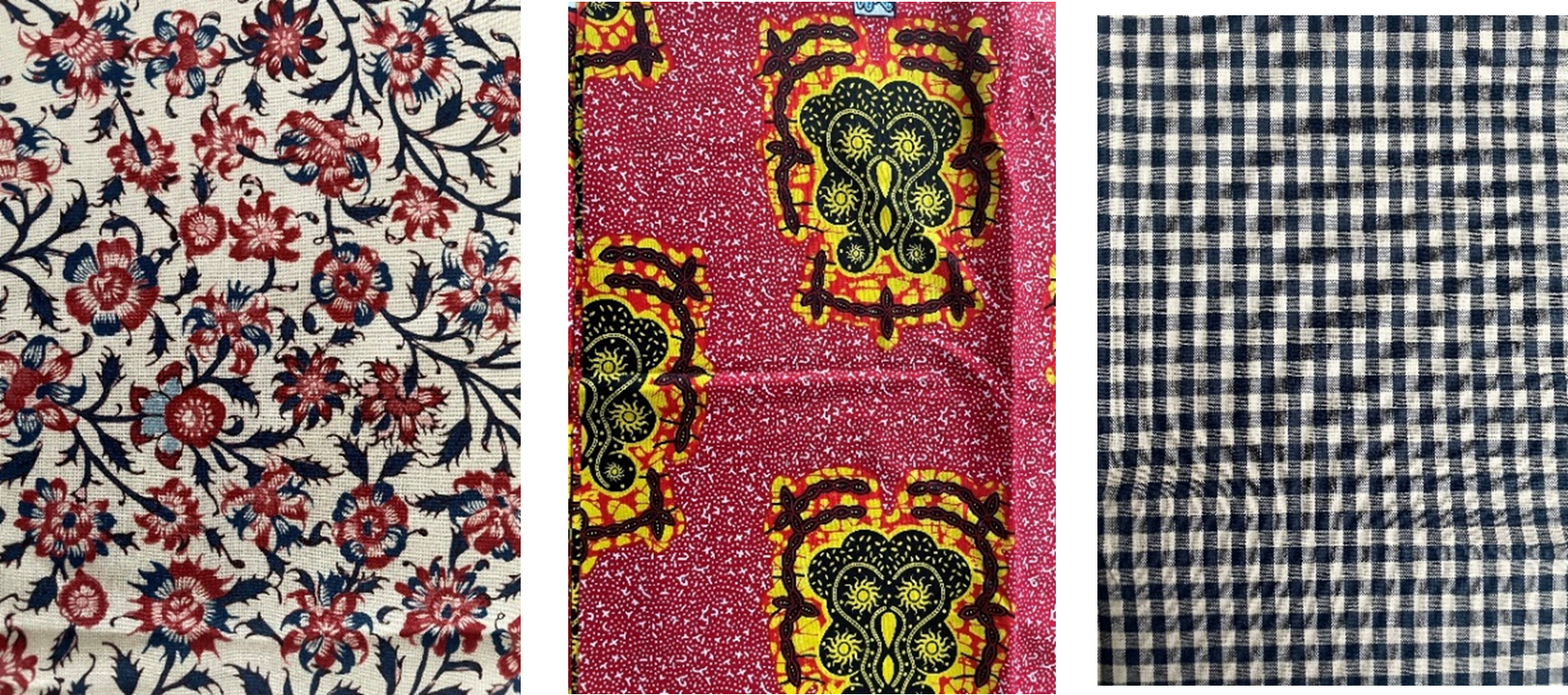WHAT IS COTTON CONNECTIONS?
Cotton Connections is a two-year community project funded by the Esmée Fairbairn Collections Fund and Arts Council England, which explores the museum’s textiles industry collection with people from Manchester’s Black African, African Caribbean and South Asian communities.
Together, we are investigating the connections between the collections and colonialism and enslavement. We are also working together to think about the opportunities and challenges around using and developing our collections to tell more inclusive stories about our shared history in the museum.
We are delivering Cotton Connections in partnership with Salford Museum and Art Gallery and Manchester Libraries, and the project explores their textiles collections alongside the Science and Industry Museum’s.
WHY IS THIS PROJECT IMPORTANT?
The history of Manchester and the surrounding region’s cotton industry is deeply linked to narratives of colonialism, enslavement, and the global movement of people and goods. So too are many of the objects in the museum’s textiles industry collection.
Cotton Connections is part of important, ongoing work at the museum to research, understand and share more about these narratives, which have historically been overlooked. This is part of our commitment to inclusive storytelling, and to ensuring the Science and Industry Museum is a place where everybody feels welcome.
Working in partnership with Global Majority communities in Manchester is central to this work.
WHAT HAVE WE DONE SO FAR?
We have just completed the first phase of the project, during which we delivered 10 introductory workshops in community venues across Manchester, connecting with over 150 participants. These workshops involved object handling, creative activities, and group discussions and reflections, designed to give potential participants a sense of the project and the opportunities to get involved
During the workshops, attendees explored three types of fabrics; chintz, checked cloth, and African wax. Each fabric type was manufactured in industrial Manchester, but connected to people and places around the world through its designs and where it was sold.

Science Museum Group Collection.
Through these fabrics, we began to discuss some of the complex global stories connected to our textile’s collections, particularly those that have historically been under-represented in the museum. We discussed how chintz fabric made by skilled Indian makers was copied and mass produced by Manchester manufacturers, how checked cloth woven in Manchester was sold in exchange for enslaved people, many of whom were then forced to work on cotton plantations, and how wax printed fabric produced in Manchester’s mills became deeply connected to West African culture.
Participants also tried their hand at paper weaving and repeat pattern making, exploring how cotton was woven on a handloom, and how designs were repeated, and mass produced for consumers. The activities also provided a prompt for discussions which explored and challenged narratives.

Science Museum Group.
Participants delved into and expanded their understanding of the extensive global influence of Manchester’s textiles industry, which has profoundly shaped lives worldwide. Many attendees were already well-versed in the legacies of Manchester cotton and its far-reaching impacts, especially when linked to their background, culture, and community. They expressed relief and satisfaction that these narratives were being thoroughly examined, feeling that their lived experiences were being recognized and valued. This acknowledgment fostered a deeper connection and engagement with the material. Attendees were especially interested in objects and stories that showcased creativity and skills, as well as the complex themes of exploitation and resistance.
These introductory sessions laid the foundations for the creation of a new, pop-up display in the museum’s Conversation Space, part the Textiles Gallery. The display showcased some of the emerging themes around design, skills, cultural appropriation, mass production and exploitation that came out of the introductory workshops and platformed the voices of some of the participants.

Science Museum Group
WHAT IS HAPPENING NEXT?
The second phase of Cotton Connections is now underway. This summer, we have partnered with some of the young people and adults who we connected with during our introductory workshops to further explore objects from the Science and Industry Museum, Manchester Archives+ and Salford Museum and Art Gallery under three themes: resistance, systems of exploitation and culture.
Participants will also take part in sessions run by museum staff, artists and creatives, where they will have the chance to create responses and reflections related to the collections and stories we explore together.
We are excited for our summer sessions with participants and look forward to sharing further updates as the project progresses.

